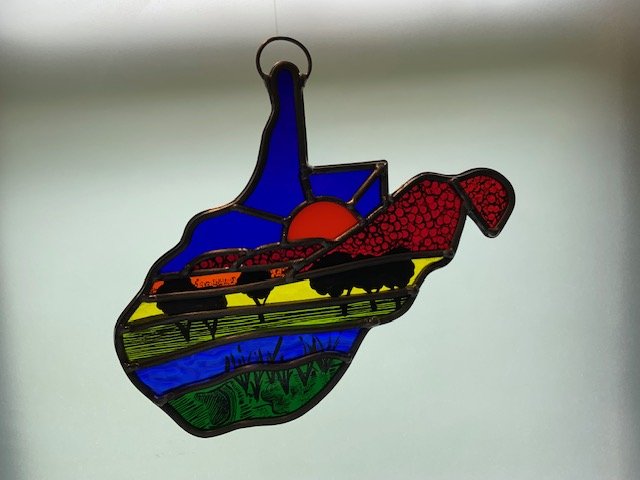Artworks & Techniques
Greenville WV-based Stained Glass Artist
Scroll to view Artworks & Techniques
Stained Glass/Fused Glass
• Nature Printing
• WV Suncatchers
• New work
• Repairs/Restoration
Terms & Techniques
Nature Printing
The methods I use to press plant materials on glass are Carbon printing, Vitra fusing and Mono/Direct printing.
Each techniques is a process of recreating an image from the natural world by simply applying pressure to a coated object on the surface of the glass.
Vitreous paints are used to create opaque effects.
Glass powders are used to fill the space with transparent and translucent tones.
After the final touches are added, the glass is kiln-fired to bond the print to the glass.

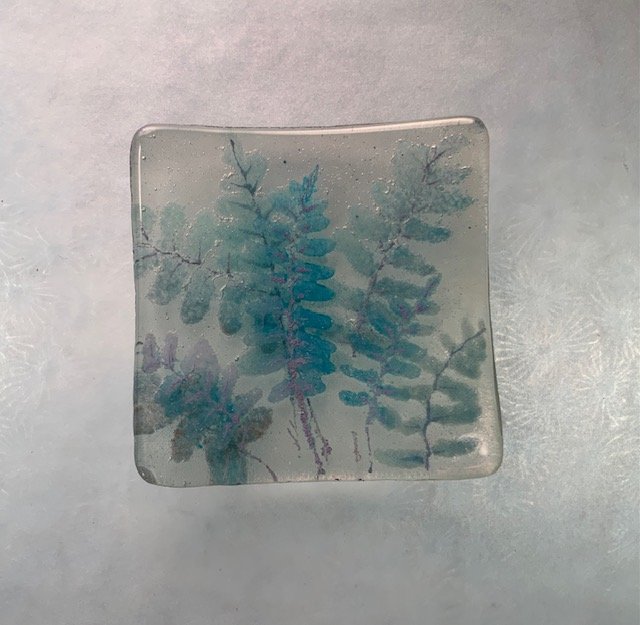

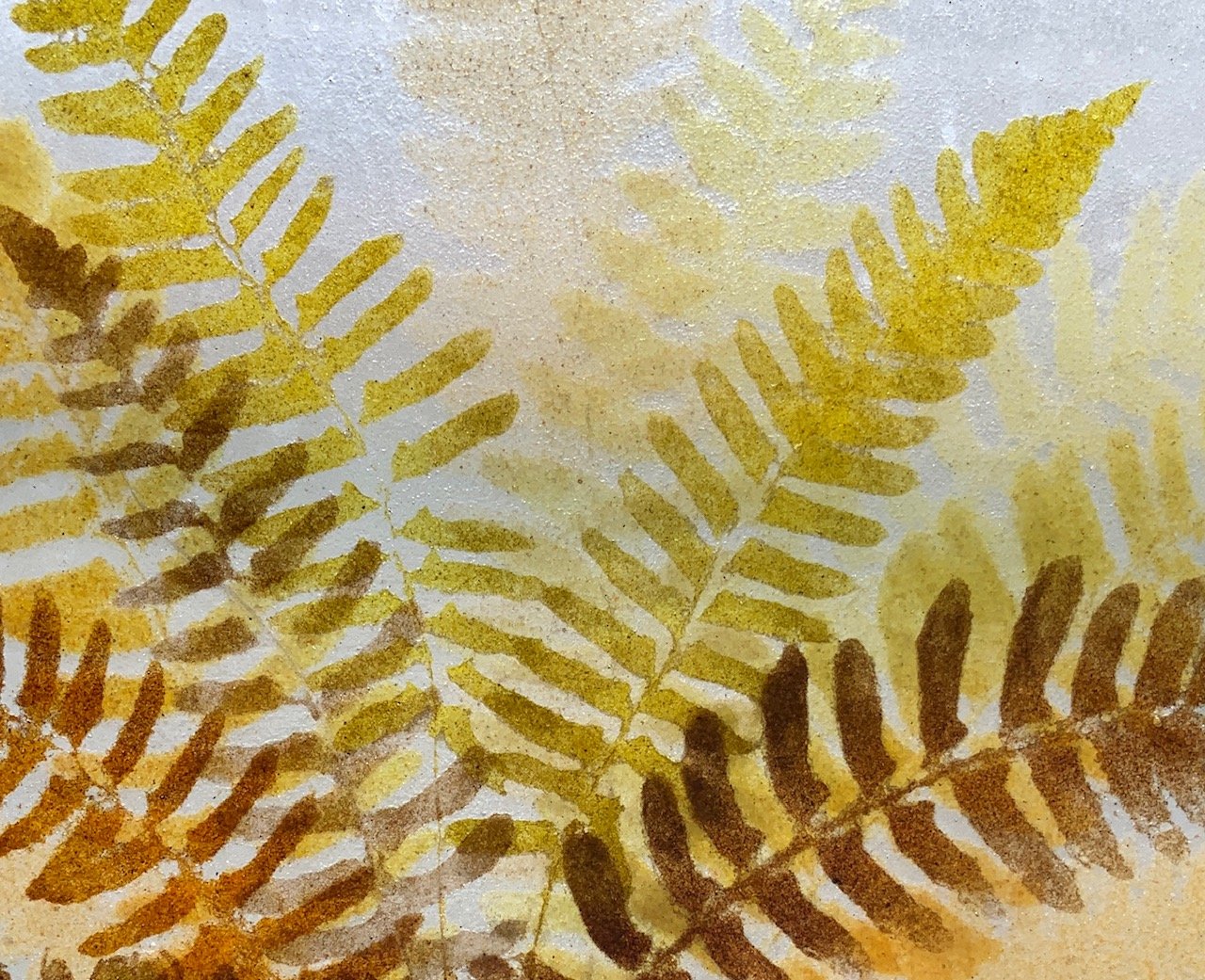


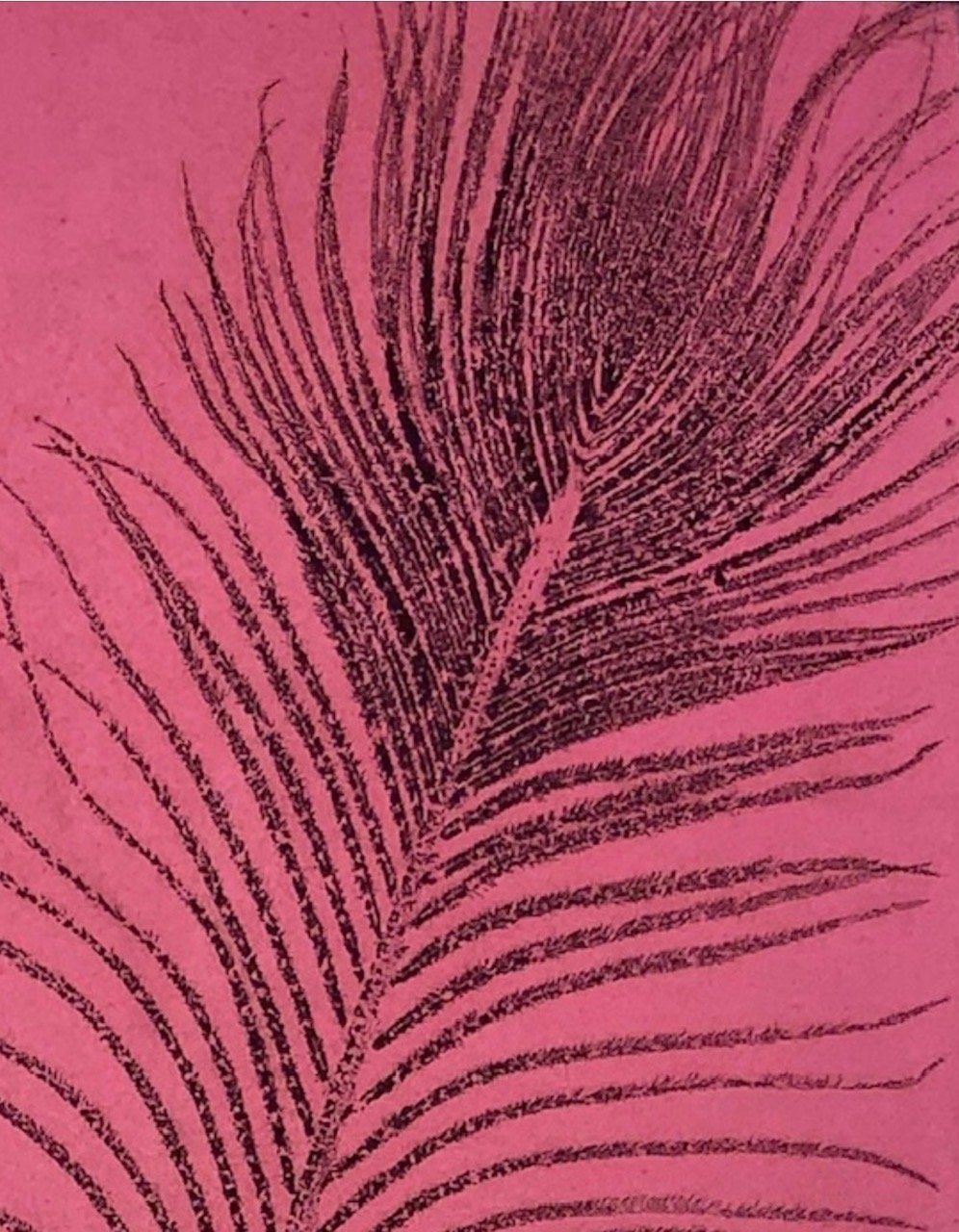

WV Suncatchers
What is a WV Suncatcher? Any item that I have that is listed and tagged as a WV Suncatcher has two important things to note. First-It is something I have made here in the Mountain State. Second-all or most of the glass is produced in West Virginia as well. The only time I substitute another glass is if it is discontinued or out of stock. Since we have such a strong history of glassmaking in the state, I felt this would be a fitting tribute.

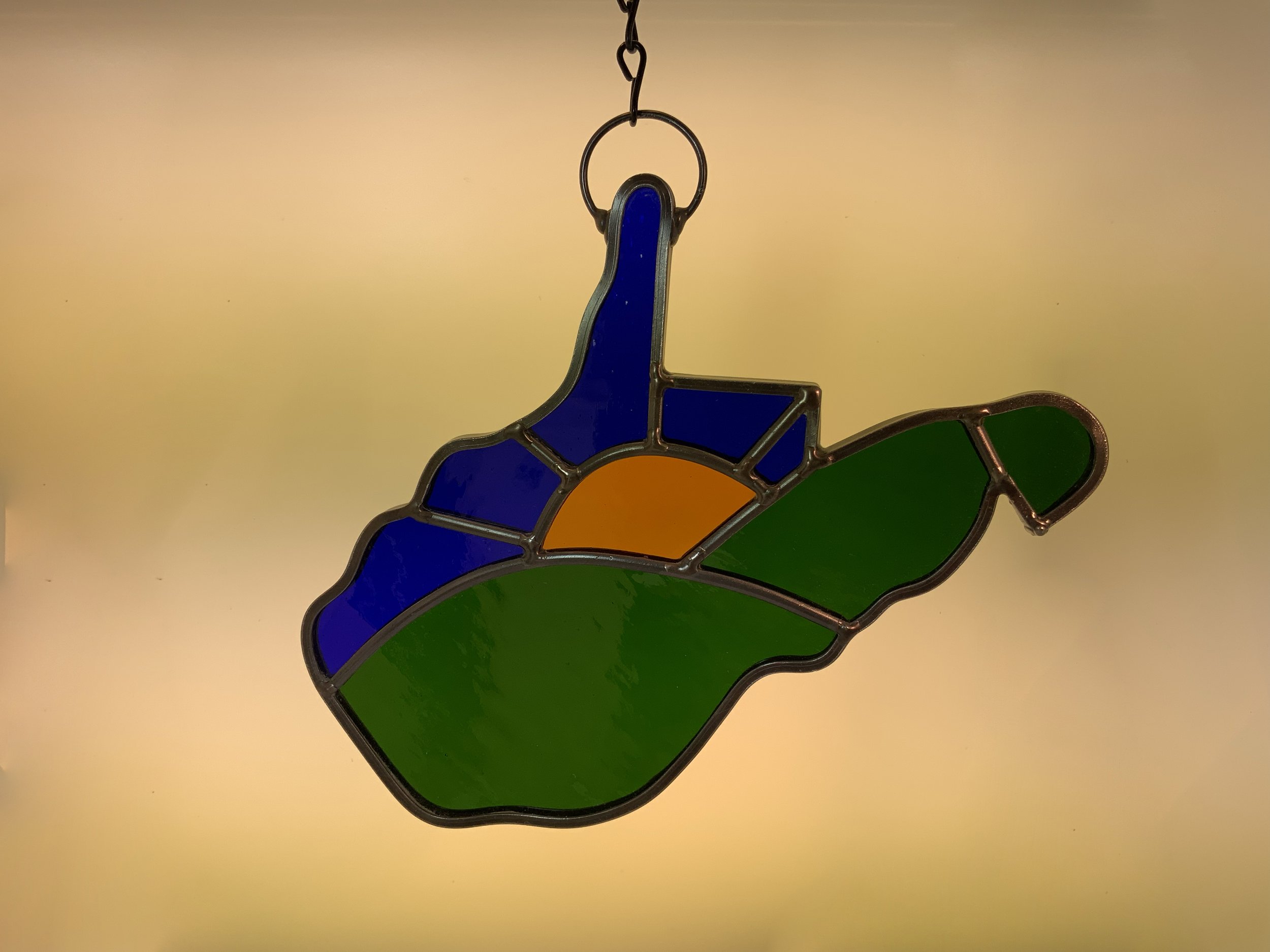

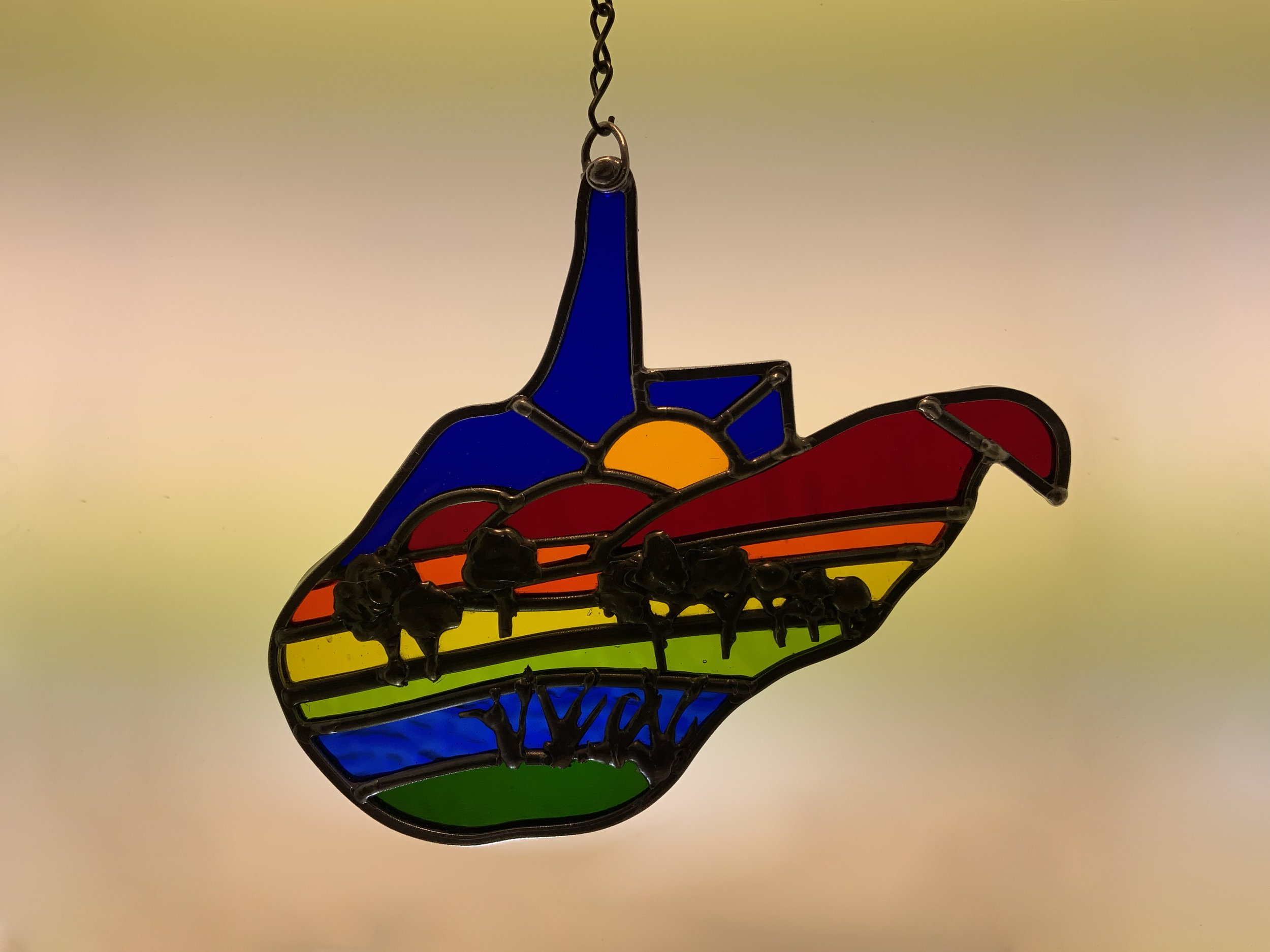







New Work
The stained glass I produce is a reflection of the natural world around me. I use either lead cane or copper foil to create the bones of the window. I then accent the pieces with special effects-painting, fusing, overlays-to name a few. I find this bit of detail work adds a bit more interest to the panel.
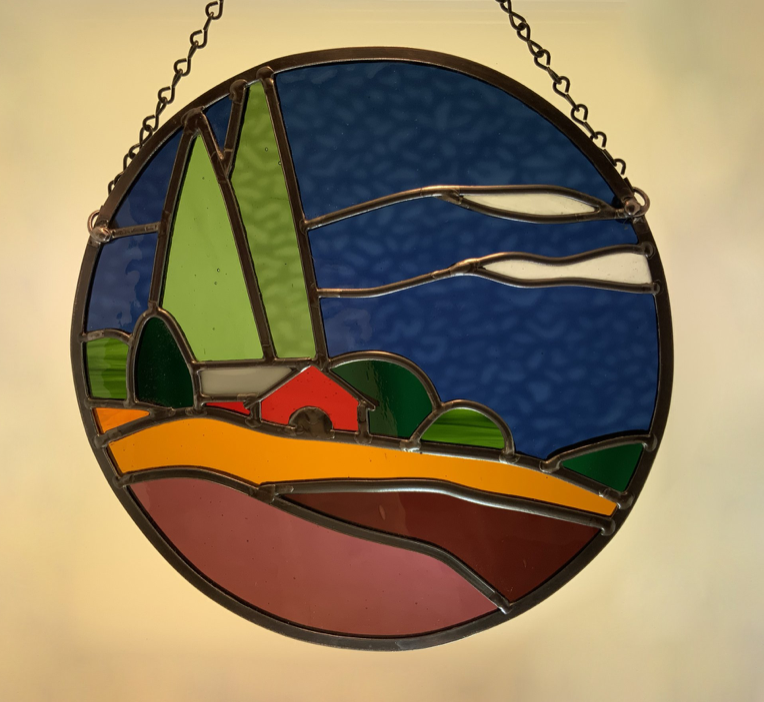
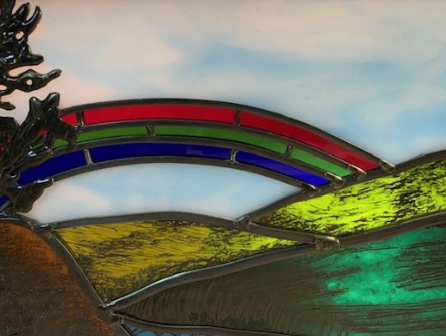
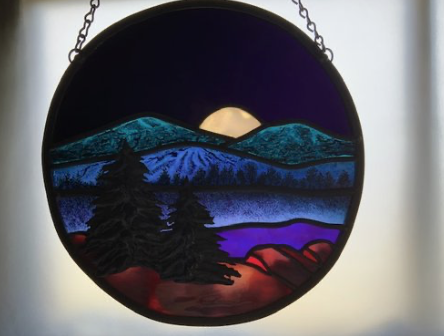
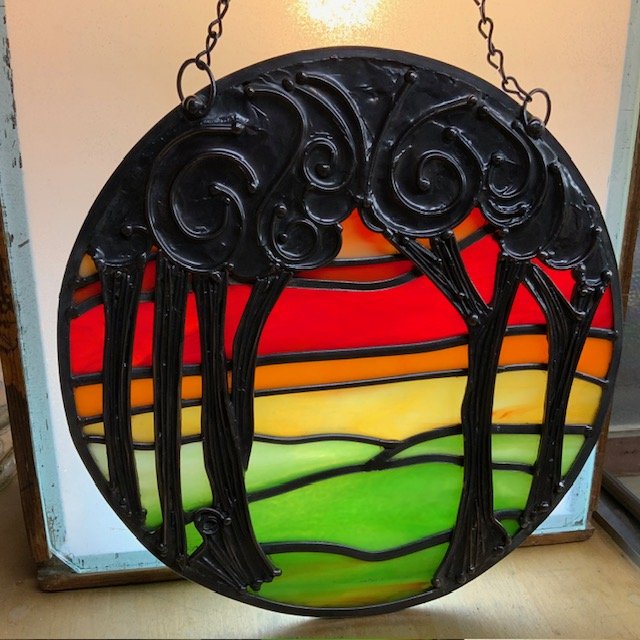
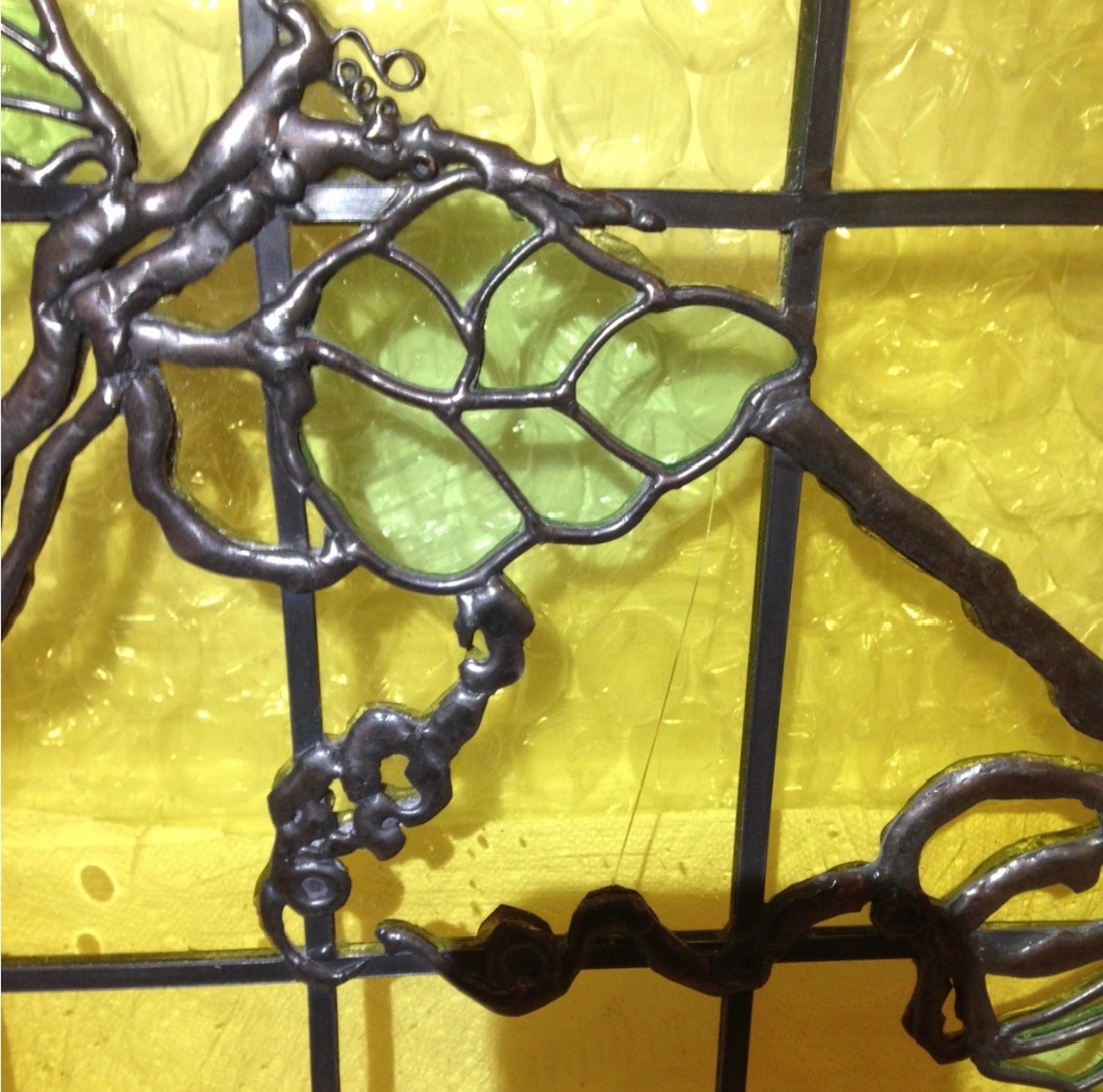
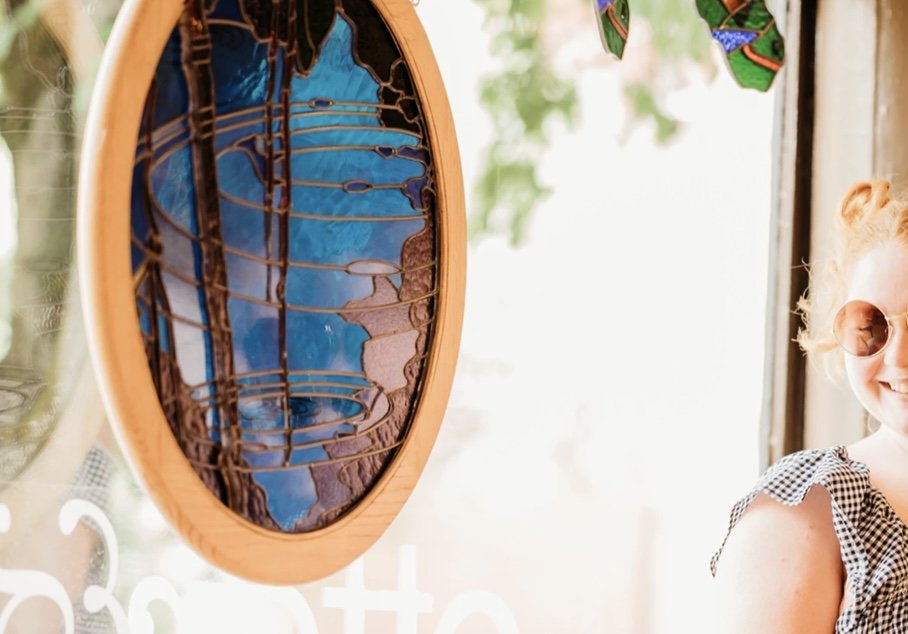
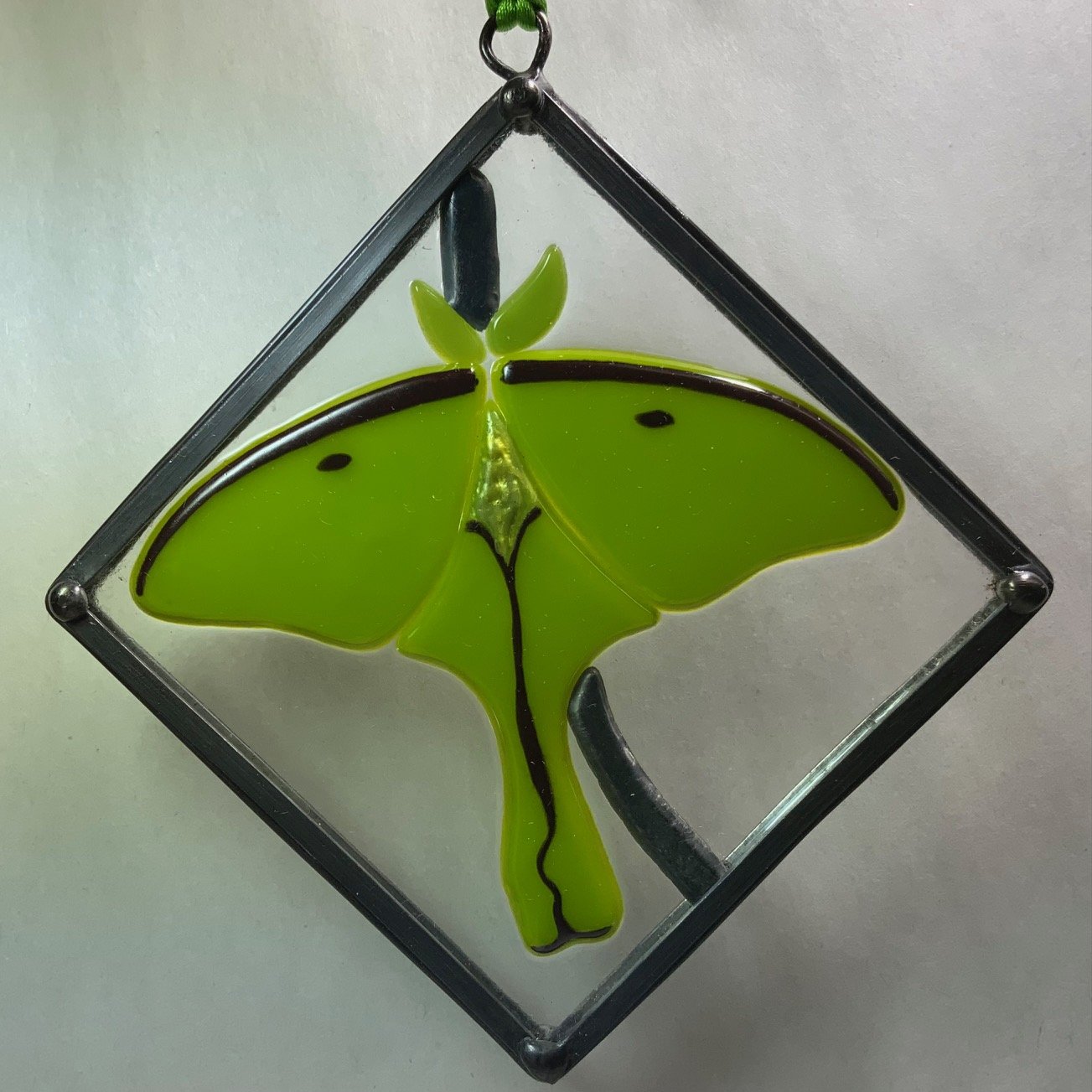

Repair/Restoration
Regeneration of Leads
A client brought me two stained glass windows that had been in an antique shop. The windows, while not very old, had been stored in less than optimal conditions. Other than a minor repair and regenerated the leads, the windows really came to life. The client was thrilled with the transformation when they were installed in his wine room.
Trinity United - Before and After Regeneration
Process: Window removed, fixed hole in upper left corner, replaced cracked glass and some of the weakest leads and regenerated the remaining to strengthen the panel. Added another rebar to make the window more stable.
Repair/Restoration
Sad Stories | Happy Endings
Restoration for Client
Sad story for me to fix
Happy ending to this sad story!
Client is thrilled!
Repair/Restoration
Reproduction
This small panel uses much of the same type of glass that you would find in a window of this style. The choice of assorted lead profiles add to the character of this piece.
Repair/Restoration
Restoration
This is the clock in Hinton, WV that I worked on with Melvin Plumley. The stained glass was made in the early 1900's and was done in copper foil. The method for producing this was that the craftsman would cut thin strips of light weight copper sheets. The copper strips were coated with warm wax on one side and this was wrapped around each piece of glass, allowing the wax-side to act as an adhesive. When all the pieces of glass were wrapped, it was laid out and assembled using a soldering iron much like we do these days.
Maya Sez
Tricks of the Trade
When applying surface treatments to leaves, the sharpest and cleanest image will show up best when you coat the back of the leaf, where the vein is prominent.
Terms & Techniques
What is?:
Carbon Printing
Carbon Printing, along with Fossil Vitra, are techniques of printing plant material on glass using a kiln-fired process. Paints and/or glass powders are applied to leaves. This coated material is placed under a sheet of glass on the kiln shelf. When fired in the kiln, the plant burns away (or carbonizes) and the glass powders fuses that imprint to the base of the sheet glass. This method can be printed on both sides of the glass, which adds a nice dimension to the piece. With care, printing glass with glass can produce some very clean and detailed nature prints.
Elemental Magic
Elemental Magic is an inclusion technique in fused glass. An inclusion is a material that is trapped within layers of glass when it reaches fusing temperatures. In this series, aluminum was chosen for its low melting point. By combining it with water-soluble sulfates, a chemical reaction occurs with the glass it comes in contact with. Depending on the chemical used to color the glass sheet and the reaction of the particular sulfate that is applied to the aluminum, an unpredictable range of textures and colors can be achieved with this technique.
Leaded Overlay in Stained Glass
An overlay is a decorative soldering technique that manipulates the solder in various artistic applications. Since it needs a base or foundation to build off of, a sculptural design element can be incorporated, along with non-traditional reinforcing to enhance the overall effect of the stained glass. This can also save time by creating details or suggestions for a piece without having to cut many pieces of glass.
Regenerating Leads in Restoration Work
Regenerating is a conservation approach towards older windows. The cement used in lead came work, to hold glass in place, has a life span. Overtime, the compound becomes brittle, cracking occurs and sections of the cement begin to dislodge. The fragile leads, under extreme stress, have a hard time performing their original function. In some cases, regenerating the cement is an effective method for preservation, as opposed to releading the entire window. The oils from this procedure discourages localized lead fatigue and improves the lifespan of the window.
Vitreous Paints and Enamels
Vitreous paints and enamels are made from powdered glass and/or materials which turn to glass in the kiln-firing process. These dry paints are mixed with a medium which is used as a vehicle to help the paint flow over the surface of the glass. The paint then needs to be fired to a temperature at which it will bond to the glass surface. This surface treatment is permanent and is resistant to the chemicals and techniques used in stained and fused glass. It differs from cold and/or acrylic painting in that these mostly contain paint pigments rather than glassy materials. Cold paints, are also, not stable and tend to break-down when they come in contact with many chemicals. All the work done uses vitreous paints and enamels.
WV Suncatcher
Any item that I have that is listed and tagged as WV Suncatcher has two important things to note. First - it is something I have made here in the Mountain State. Second - all or most of the glass is produced in West Virginia as well. The only time I substitute another glass is if it is discontinued or out of stock. Since we have such a strong history of glassmaking in the state, I felt this would be a fitting tribute.
Foldforming
Foldforming is an approach used to work with metal. Rather than forcing the metal in a particular direction, copper is heated; then quenched-making the metal soft and pliable. As you work and form the shape that you want, the copper hardens,( becomes frozen) and no longer flows. By using simple hand tools, it is quite easy to shape pieces for a project. Copper is one of the most commonly used materials in stained and fused glass, making this technique a welcome addition to play with.
























